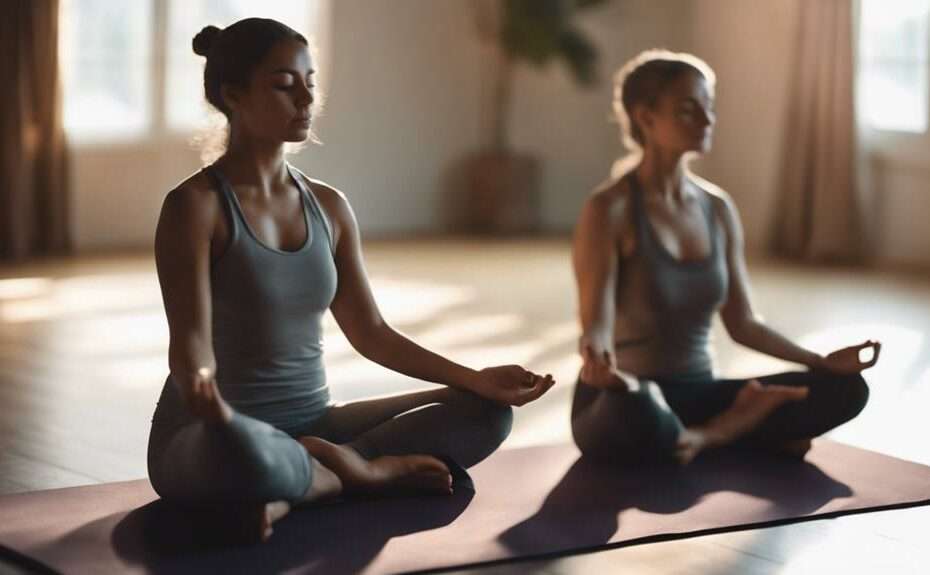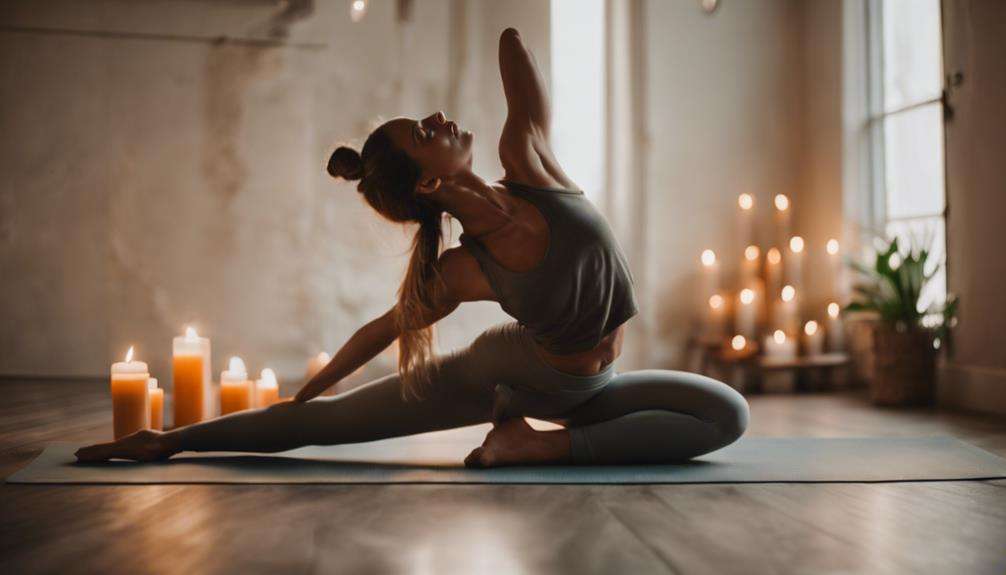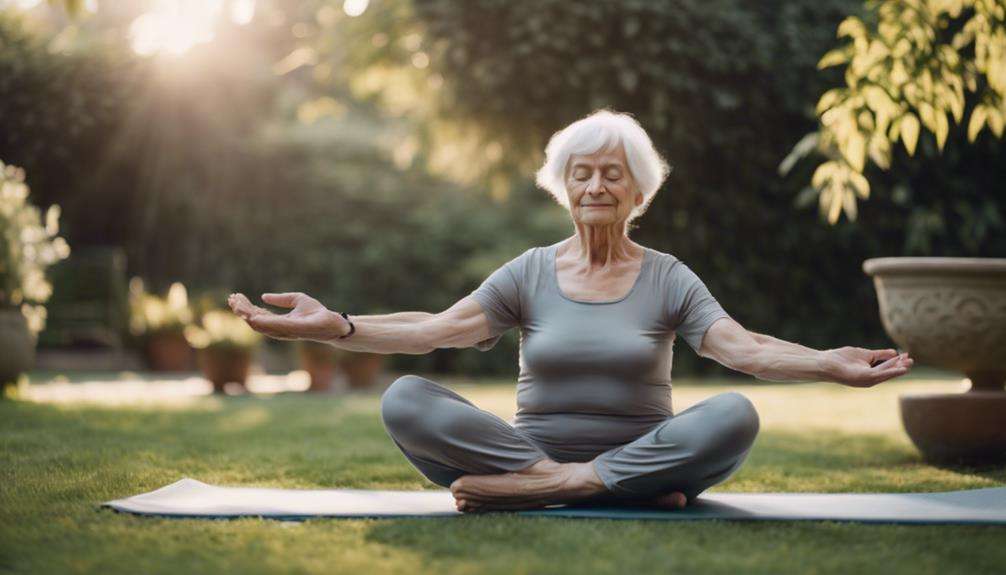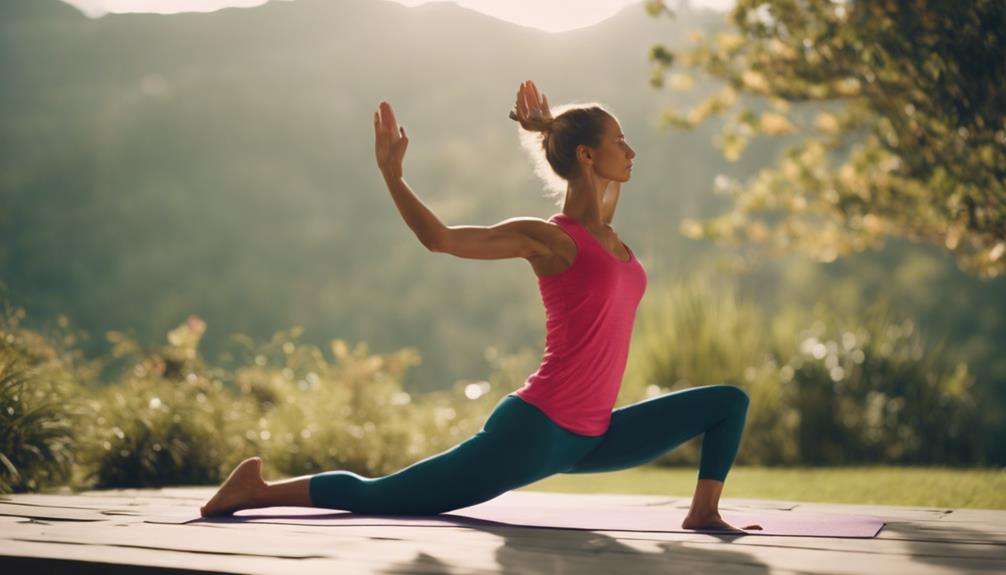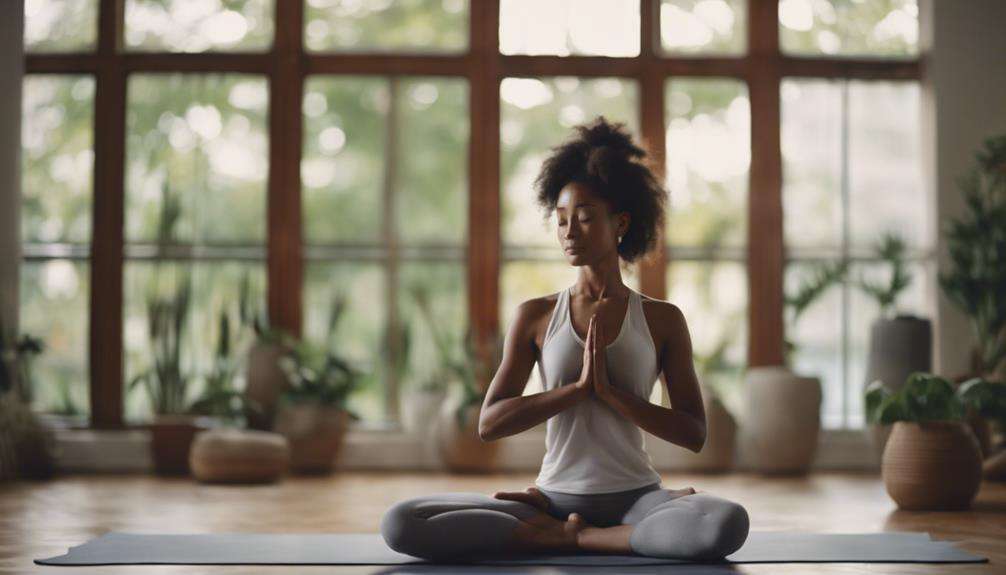If you've ever heard the saying, 'Take a deep breath,' you understand the power of breathwork in enhancing flexibility. But did you know there are specific practices that can take this to a whole new level?
By mastering techniques like diaphragmatic breathing, box breathing, and the Wim Hof method, you can deepen your flexibility in ways you never thought possible. These methods offer a gateway to not just physical suppleness but also mental clarity and emotional balance.
Want to unlock the secrets to a more flexible body and mind?
Key Takeaways
- Deep, controlled breaths optimize flexibility journey and enhance range of motion.
- Synchronize breath with movements to prevent injuries and improve coordination.
- Mindful breathing practices melt tension, relax muscles, and promote elongation.
- Diaphragmatic breathing overrides stretch reflex, enhances body awareness, and improves flexibility.
Benefits of Incorporating Breathwork
Enhance your flexibility journey by delving into the myriad benefits of incorporating breathwork into your practice. Flexibility is crucial for overall health and well-being. By integrating controlled breathing techniques such as diaphragmatic breathing, you can optimize your range of motion and joint mobility.
When you focus on breathwork during your stretching routines, you enhance oxygen flow to your muscles, enabling deeper stretches and loosening muscle tightness. This intentional connection between breath and movement also stimulates the autonomic nervous system, promoting relaxation and reducing stress that may hinder flexibility progress.
Diaphragmatic breathing, a key element of breathwork, helps override the stretch reflex, allowing you to explore deeper stretches safely. By engaging in breathwork alongside your flexibility exercises, you cultivate a heightened sense of body awareness and mindfulness. This holistic approach not only deepens your flexibility but also improves your posture and overall physical well-being. Embrace the power of breathwork to unlock the full potential of your flexibility journey.
Techniques to Enhance Flexibility
Exploring gentle breathing techniques can significantly amplify your flexibility training, fostering a harmonious connection between body and breath. Breath control plays a crucial role in enhancing your flexibility.
Focus on deep, controlled breaths to accompany your stretches, allowing for a deeper stretch and improved muscle relaxation. Ensure proper form during stretching exercises, and synchronize your breath with each movement to optimize your range of motion and promote tension release.
This coordination of breath and movement not only aids in preventing injuries during flexibility training but also enhances your overall coordination.
Mindful Breathing for Improved Flexibility
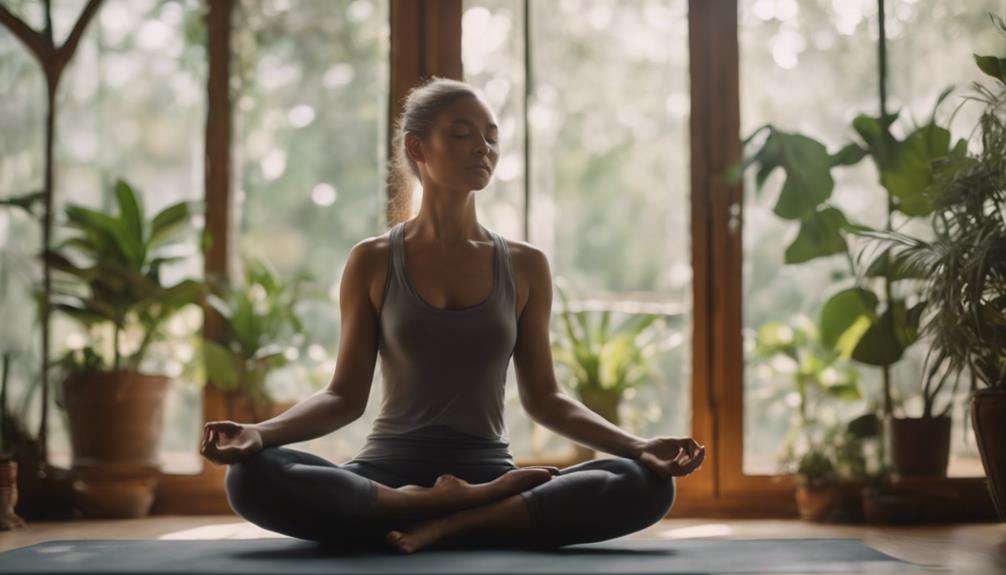
Incorporate mindful breathing techniques into your flexibility routine to deepen your stretches and promote relaxation within your body.
- Mindful Breathing: Focus on the sensation of air entering and exiting your body.
- Deep Breaths: Inhale deeply through your nose, filling your lungs with air, then exhale slowly through your mouth.
- Stretching: Coordinate your breath with your movements to enhance the effectiveness of each stretch.
- Flexibility: Feel the tension melting away as you breathe deeply, allowing your muscles to relax and elongate.
Frequently Asked Questions
What Is the 4 4 4 Rule of Breathing?
Breathe in deeply for 4 counts, hold it, then exhale slowly for 4 counts. This diaphragmatic technique helps with stress relief, mental clarity, and relaxation. It boosts oxygen intake, improves lung capacity, and enhances your overall well-being.
Does Breathing Improve Flexibility?
Breathing deeply enhances flexibility by increasing oxygen flow to your muscles and promoting relaxation. It overrides the stretch reflex, allowing for safer stretching. Incorporate focused breathwork during stretching to improve range of motion and prevent injuries.
What Is the 3 2 3 Breathing Technique?
Breathe in for 3, hold for 2, then exhale for 3 – that's the 3 2 3 technique. It enhances breath awareness, fosters a relaxation response, and deepens the mind-body connection. Reduce stress, increase oxygen intake, and improve flexibility.
What Is the 3 6 9 Breathing Technique?
To practice the 3 6 9 breathing technique, you inhale for 3 seconds, hold for 6, and exhale for 9. Deepening relaxation, enhancing focus, and boosting energy. Stress reduction, mind-body connection, improving circulation, emotional balance, enhancing performance, and mindfulness are all benefits.
Conclusion
As you continue to practice these three best breathwork techniques, you'll unlock a deeper sense of flexibility within yourself.
Just like a skilled yogi mastering their poses, you too can achieve a level of inner peace and strength through the power of your breath.
Embrace the calmness within, let go of any tension, and flow with the rhythm of your breath to experience true liberation and transformation.
Namaste.
